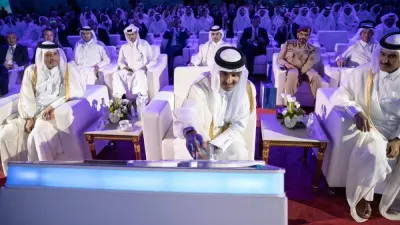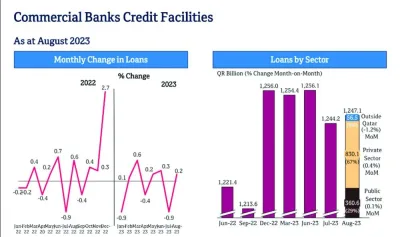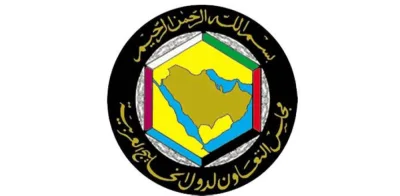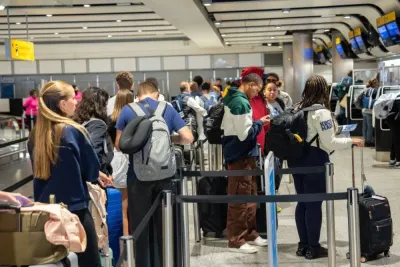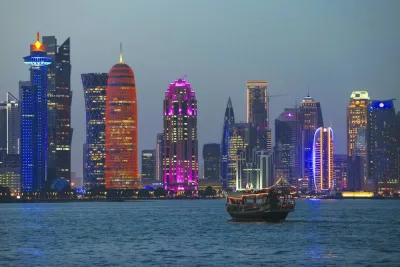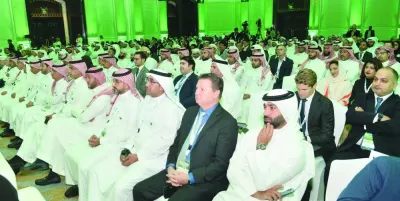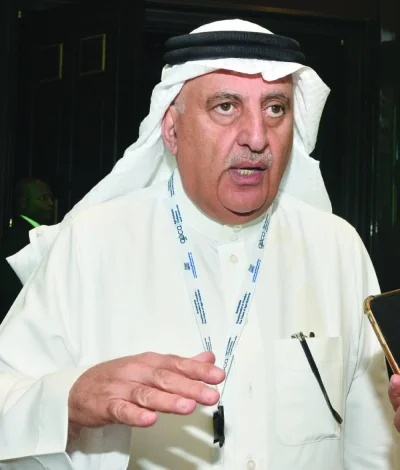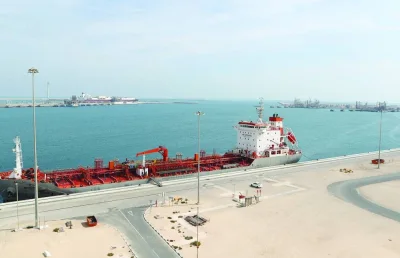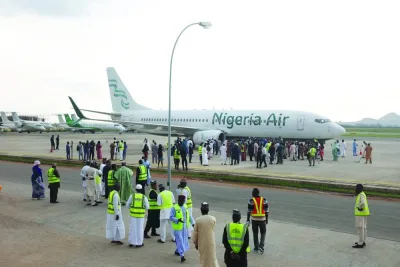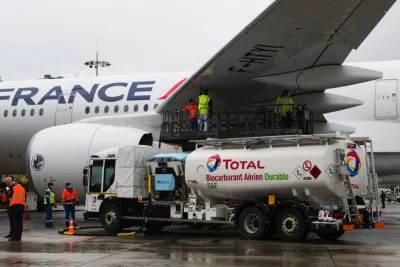His Highness the Amir, Sheikh Tamim bin Hamad al-Thani Tuesday laid the foundation stone of the North Field expansion, global industry’s largest ever LNG project, which will raise Qatar's LNG production capacity from the current 77mn tonnes per year to 126MTPY by 2026.The multi-billion dollar project’s ground breaking took place during a special ceremony at Ras Laffan Industrial City attended by HE the Minister of State for Energy Affairs, Saad Sherida al-Kaabi, also the President and CEO of QatarEnergy, and CEOs and senior executives of QatarEnergy’s partners in the expansion project.The NFE project comprises the North Field East (NFE) and the North Field South (NFS) expansion projects and is the industry’s largest ever LNG project.The project includes six mega trains, each with a production capacity of 8MTPY of LNG, four of which are part of the North Field East expansion project, and two part of the North Field South expansion project, contributing a total of 48MTPY to the global LNG supplies.The North Field expansion will provide significant benefits for all sectors of the Qatari economy during the construction phase and beyond.Speaking at the ground breaking ceremony, HE al-Kaabi stressed that the pioneering expansion project is a quantum leap in Qatar’s leadership in the field of energy, and an “embodiment of our goals towards optimal investment in our natural resources and our commitment to providing the world with a cleaner source of energy over many decades.”QatarEnergy is partnered in this global project by TotalEnergies, Shell, ConocoPhillips, ExxonMobil, Eni, Sinopec, and CNPC, whose contributions will play a pivotal role in ensuring the project’s success and achieving its goals by producing LNG that is the best in the world in terms of safety, reliability, and carbon footprint.In addition to LNG, the project will produce 6,500 tons per day of ethane gas, which will be used as a feedstock in the local petrochemical industries. The project will also produce about 200,000 barrels per day of liquefied petroleum gas (propane and butane), and about 450,000 barrels per day of condensates, in addition to large quantities of helium and pure sulfur.The unique project is characterised by the highest health, safety, and environmental standards, including carbon capture and sequestration, to reduce the project’s overall carbon footprint to the lowest levels possible.The NFE project is a "strategic" step in cementing Qatar's position as the leading LNG producer and it will play a major role in meeting the increasing global demand for LNG. It is also in line with Qatar's long-term vision to develop the country's natural resources.In a statement, Patrick Pouyanné, chairman and Chief Executive Officer of TotalEnergies said, “TotalEnergies is honoured to be part of today's North Field expansion, reinforcing Qatar's status as the world's leading LNG producer with a capacity of 126mn tons. “Thanks to innovation, the Northfield Expansion is a flagship project for industry to which TotalEnergies is proud to contribute through its expertise and engineers. This project is set to spearhead efforts in slashing greenhouse gas emissions, emphasising the key role of LNG and natural gas in the energy transition."

Pratap John
Pratap John is Business Editor at Gulf Times. He has mainstream media experience of nearly 30 years in specialties such as energy, business & finance, banking, telecom and aviation, and covered many major events across the globe.
Most Read Stories
3

